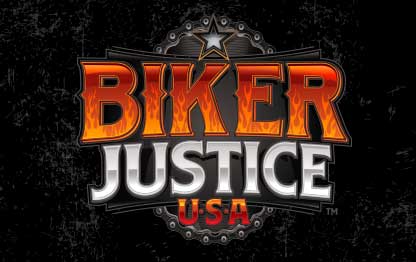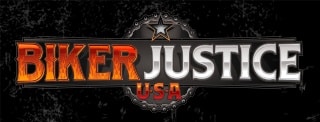Experienced Oklahoma Motorcycle Accident Attorneys
Get the Oklahoma Motorcycle Legal Help You Need, So You Can Ride Hard.
Oklahoma is a motorcycle rider’s dream with its sweeping landscapes and endless views. Unfortunately, with that allure also comes dangers for those riding their bikes. And, when it comes to finding a Motorcycle Accident Attorney in Oklahoma you have a lot of choices. A lot of attorneys saying they are ‘the best’ personal injury lawyer in the area.
However, we know that you don’t only need a good personal injury attorney – you NEED one who knows ALL the finer details of motorcycle injury law. NOT someone who specializes in other fields and also takes on motorcycle accident cases.
That’s where we come in. Our goal is to go through all the personal injury lawyers and include only those who have a vast experience in motorcycle accident cases. Who either ride bikes themselves or are actively participating in the rider community.
The Most Commonly Asked Questions from Riders Like You.
Do I need insurance to ride my motorcycle in Oklahoma?
Do you have to have a motorcycle license in Oklahoma?
What do I need on my Motorcycle to be street legal in Oklahoma?
Do I need to wear a helmet to ride a Motorcycle in Oklahoma?
Can I ride my ATV in Oklahoma?
Do I need a license to ride my Moped in Oklahoma?
How do insurance adjusters calculate pain and suffering?
Do you have a head injury from a motorcycle accident in Oklahoma?
What to do if you were in a Hit and Run Motorcycle Accident in Oklahoma?
Do I need insurance to ride my motorcycle in Oklahoma?
The short answer to this question is yes: You do require
insurance to ride in the State of Oklahoma. The State minimum requirements for
insurance are
- $25,000 for the injury or
death of an individual
- $50,00 for the injury or
death of two or more people
- $25,000
for the damage of property.
Despite these being the minimum requirements, it may be wise to
consider additional coverage such as Uninsured Motorist Coverage. Nearly 26% of
motorists in Oklahoma are uninsured or underinsured, and these preparations
could save you a great deal of trouble in the case of an accident.
Did you know: There are 77
counties throughout the great State of Oklahoma that spend $100,000,000
annually maintaining their highways! That’s a lot of road for some fantastic
rides!
Do you have to have a motorcycle license in Oklahoma?
In order to ride your motorcycle legally within the State
of Oklahoma, a state-issued driver’s license with an “M’’ endorsement is
required.
In order to obtain
your endorsement, you must first pass both a written and vision test to earn a
permit. For the next 30 days, you must be supervised by someone who is licensed
to operate a motorcycle. After this training period, you can then take your
road exam to earn your “M” endorsement.
Exceptions to the above include:
- If you are over the age of 14 and under the age of 16, you can
only obtain a motorcycle-only license.
- You must be at least 16 years
old to obtain a motorcycle endorsement
- If you
pass an approved Motorcycle Safety Education Course, the final road exam is not
required.
Did you know: Requiring a
license to ride a motorcycle in Oklahoma only recently came into law; in fact,
its only been law since 2004 during the 2nd Session of the 49th Legislature -
It was presented into the legislature in the HOUSE BILL NO. 2637 By Steele of
the House and Laster of the Senate - Check it out here: Link
What do I need on my Motorcycle to be street legal in Oklahoma?
In order to maintain a minimum level of safety, certain
equipment is required to ride a motorcycle in the State of Oklahoma.
- A Windshield that is big enough, and of sufficient quality, to
protect you from foreign objects - OR eye protection (such as goggles) approved
by the Department of Transportation
- Left
and Right rearview mirrors, each of them three inches in diameter.
- Handlebars
no higher than the eye level of the rider while sitting
- A
separate seat and footrest for passengers, if carrying one
- Turn
signals
- A
functioning headlight
- A
muffler, which must be in good condition and constant operation.
Did you know: In order to legally operate a
motorcycle in Oklahoma, you must have an “M” endorsement on your state-issued
driver's license. ... You have to be 14 years old to acquire a motorcycle-only
license or be 16 years old to earn a motorcycle endorsement.
Do I need to wear a helmet to ride a Motorcycle in Oklahoma?
When riding on a motorcycle in the State of Oklahoma, a
helmet is only required if the rider is under the age of 18.
However, as Oklahoma is an at-fault state which uses the
comparative negligence system, failing to wear a helmet can sometimes be
considered negligence in the case of an accident.
If you receive
head injuries as a result of an accident where you were not wearing a helmet,
some juries may consider you to be partially at fault for your injuries, which
can reduce the compensation you receive.
For this reason,
and to reduce the risk of serious or even fatal injuries, it is still advisable
to wear a crash-resistant helmet.
Interesting Fact: Black or White - which helmet color do you prefer? “Although
black helmets are popular among motorcyclists, one study determined they offer
the least visibility to motorists. Riders wearing a plain white helmet rather
than a black one were associated with a 24% lower risk of suffering a
motorcycle accident injury or death.” - read all about it on Wikipedia!
Can I ride my ATV in Oklahoma?
Absolutely, though, with few exceptions you’ll have to
stay off of public roads, even after getting your ATV registered.
Oklahoma’s many State Parks are home to trails that are
often used for ATV riding, and though there are several restrictions on where
you can ride on public lands, you’re generally free to ride as you like on
private property (as long as the owners are okay with it!)
The times you can take your ATV on public roads are when:
- The street is located on a state park
- The municipality has passed
ordinances allowing ATV/UTV operation
- The
street is located in an unincorporated area, with a speed limit no higher than
25 miles per hour, with signs warning of UTV use.
Or when crossing a street connecting one trail to another during
daylight hours, with a posted speed limit no higher than 35 miles per hour. In
this case, you must come to a full stop before crossing, yielding the right of
way to all oncoming traffic.
Do I need a license to ride my Moped in Oklahoma?
Unlike in many other states, a Moped is not considered a
motorcycle in the State of Oklahoma. However, it still must be registered,
tagged, and titled in the State to be driven here.
A Moped requires a Class A, B, C, or D driver’s license
to be legally driven. You may
not drive a moped on highways or on an interstate.
To be considered a Moped and not a Motorcycle, your Moped
must have:
- Both pedals and a motor to propel the Moped
- An
automatic transmission
- A
motor no larger than 50cc
- A
maximum speed of 30 Miles Per Hour on level ground.
Interesting factoid: The word moped was
coined by the Swedish journalist Harald Nielsen in 1952, as a portmanteau of
the Swedish word’s "motor" and "pedaler." The claimed
derivation from the term motor-velocipede is incorrect. ... Like some of the
earliest two-wheeled motorcycles, all mopeds were once equipped with bicycle
pedals.
How do insurance adjusters calculate pain and suffering?
If you have to deal with an Insurance company after a motorcycle accident, you are going to want to make sure you have a knowledgeable and experienced advocate at your side! For you, this, not a daily conversation, and you are not overcoming bias’s built by years of facing this situation, so don’t be naive or trusting when our well being and fair compensation to cover your needs are on the table.
There are different methods of
determining how long an injury will impact your life and your livelihood.
Insurance companies don’t take that into account. An insurance company will
typically multiply the cost of medical bills you have receipts for, by
something between one and five - like a sliding scale based on how permanent
they deem your injury to be and how much of it was caused by your accident.
This is how they calculate “pain and suffering.”
The more severe and permanent your
injury is, the higher the number they will use as a multiplier. You, or your advocate, will need
to use your best judgment in estimating your pain and suffering, so we highly
recommend you choose a seasoned accident lawyer for your advocate! We will make
sure your rights and your needs are address to the maximum benefit available
for you and your family.
You Matter: Pre-existing conditions do not pre-empt compensation requirements, nor
do they dictate that you deserve less than a fair and reasonable settlement
that empowers you to regain your productive life!
Do you have a head injury from a motorcycle accident in Oklahoma?
The cost and long
term damages of a traumatic brain injury can be incredibly extensive.
Even minor head
injuries, like concussions without loss of consciousness or other long term
damage, can cost tens of thousands of dollars in damages, from medical bills,
loss of wages, or other sources.
More severe
injuries can have lifelong effects that impair an individual's ability to work
or engage in other activities that they previously enjoyed. Individuals with
severe head injuries are often so badly affected that they might never be able
to work again.
The expenses of
ongoing treatment, loss of work which could be used to support them and their
families, psychological impact (including the cost of counseling), and overall
impact on their ability to live their lives can cost you as much as 1.9 million
dollars over the course of their lives.
This is only part
of why it is important to contact an experienced attorney as soon as possible
after your injury so that they can support you in receiving fair compensation
with a minimal amount of personal stress. If you've received a head injury as a
result of a motorcycle accident, contact a Motorcycle Injury Attorney today.
What to do if you were in a Hit and Run Motorcycle Accident in Oklahoma?
Even
if you think you are unharmed and no one else is injured - do not leave the
scene or allow the other driver/s to leave the scene. Call the police to
attend, also call whatever other emergency services may be required to attend
at the scene. If you are able to take pictures of the license plates of anyone
involved, take pictures of each and every aspect of the scene, yourself and
others involved in the accident. Take pictures of the surroundings, any road
hazards, signals, lights, signs, etc.
If you’re not able to collect photos and
information on your own, ask a bystander to help you. Jot down his or her
information, as well: full name, phone number, and email address.
If you were a bystander or a passenger, you might be covered by the
uninsured motorist clause of the driver’s insurance policy. Make sure you have
a copy of the police report filed on the accident and the
But the sad fact is,
no matter who you were in this situation, no one else is watching out for your
best interests, except you. This is where an experienced and seasoned advocate
like a motorcycle accident lawyer can make all the difference in the world for
you! They can be your voice, so you are seen and heard in the recovery process
with the least amount of push back possible. Call us for a consultation today,
let’s see if we can advocate for you!
 100% Free Motorcycle Insurance Audit
100% Free Motorcycle Insurance Audit




